The world of SEO is changing rapidly. What used to work earlier doesn’t work today. What is working right now may not work in the coming years.
Every online marketer needs to keep up with the latest trends in SEO and content marketing for their digital marketing strategy to be successful.
This means if you’ve been using the same SEO techniques for years, it’s time to update your SEO knowledge and skills. This also means that we may need to change our approach towards SEO.
So what are the current SEO trends and what are the SEO predictions for this year?
In this article, we will explore some of the most important SEO trends and predictions that will impact the SEO space in the future.
Let’s look at them one by one:
SEO Predictions for This Year
SEO Predictions #1. Optimize for Core Web Vitals (UX)

Core Web Vitals is a new ranking factor. It’s all about page experience. Core Web Vitals are metrics that measure the quality of a website’s user experience on a page-by-page basis.
It measures how quickly the page content loads, how quickly visitors can interact with your website, and how volatile is the content elements on the page when it loads in the user’s browser.
Core Web Vitals include three webpage experience (UX) metrics:
1) Largest Contentful Paint (LCP): Page Loading Performance. It measures how fast the largest piece of content appears on the user’s screen.
The largest content element could be an image, a video, or a block-level text element. For the best user experience, LCP should be 2.5 seconds or less.
2) First Input Delay (FID): Page Responsiveness. It measures how fast the page responds to the user input (such as clicking a link, tapping on a button, etc.).
FID is particularly important for dynamic/interactive pages where a user wants to take some action. For better UX, your page’s FID should not exceed 100 milliseconds.
3) Cumulative Layout Shift (CLS): Visual Stability. How stable the content is while loading the page. Does it move when a user is trying to interact with the page? Your page CLS score should be 0.1. or less.
Using these indicators, you can tell how quick and seamless it is for people to use your website.
The higher your website’s page experience ratings are, the better your user experience will be.
How to improve LCP score?
A few easy ways to improve your Core Web Vitals are:
Step #1: Check your site’s Core Web Vitals.
First, visit your Google Search Console account and select the “Property” (your site).
Next, click on the “Core Web Vitals” tab under the “Experience” section on the left.
This will show you all the data for the last 90 days like this:
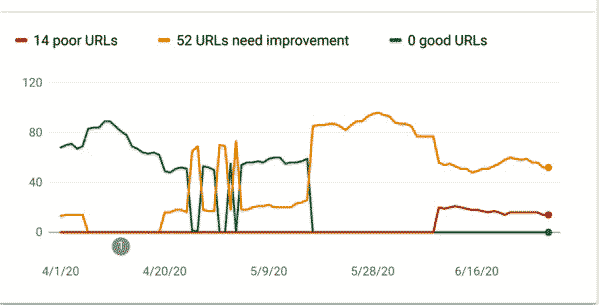
Look at the scores. Find where you lack. What are those pages where you need improvements?
Step #2: Improve overall load speed.
● Implement lazy loading for images. The UX and Core Web Vitals score will not be affected if you use lazy loading for pictures on your site. Lazy loading enables pictures to load as visitors scroll down the page, maximizing your LCP score.
● Optimize images for web search. When you optimize your pictures, you improve the site’s loading speed thereby improving the overall LCP score and user experience (UX). All this helps you improve your search engine rankings.
● Optimize your site’s code. Optimize and minify your site’s HTML, JavaScript, and CSS code. You’ll need an expert for this.
● Use lightweight CMS themes.
● Compress images. If you are using WordPress, you can use an image compression plugin such as Optimole, Smush, etc.
● Get a better hosting provider. Slow server response time may harm your SEO as well as your user experience. If the server is slow, it’s time to migrate to a faster, reliable hosting partner. (More on this in a while)
For most of the sites, the steps mentioned above are sufficient to optimize your sites for the Core Web Vitals.
SEO Predictions #2. Google Passage Ranking/Indexing
With the latest update, Google will index passages instead of the whole web page. That means, if a searcher puts some specific query like “what is content marketing”, it’ll pull the section, from a page, where the definition is provided like this:

Even if the web page covers a lot of steps or topics on an article, different subjects from the search query, Google passage indexing nevertheless pulls parts of it into search engine results.
This is good news for those with comparatively low authority. Google uses passage indexing, which allows them to rank information in parts apart from the rest of the page.
To better comprehend the content and rate the passages, Google makes use of BERT and neural networks.
Google still scans the whole page and indexes it, but it looks for content and meaning as it goes. It may rate and evaluate each paragraph on its own, based on its annotated content.
Even if the material isn’t completely optimized, a modest increase in ranks and traffic may be expected for the relatively less-optimized long-form content.
It’s more likely that long-form content will score well for a broader range of keywords. Short articles may see a little drop in ranking while long-form content a rise.
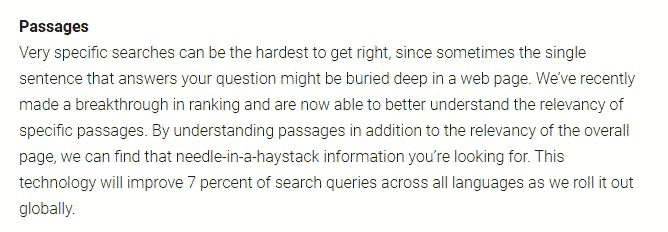
Image: Google.
According to Google, only 7% of search queries will be affected by the change, so don’t anticipate drastic changes. Your site’s rating may not be affected at all if you format your long article using passage indexing features.
With this, on-page SEO techniques like utilizing the correct header and optimizing anchor text have become more crucial than ever before.
Pages with less SEO, but superior content, may surpass others in the SERP. Now is a good moment to try long-form content if you haven’t before. Even if a page’s SEO isn’t flawless, Google is ready to assist visitors in discovering valuable information.
SEO Predictions #3. Optimize for Featured Snippets
Position #0 is the new #1.
Position #0 refers to the spot just above the first organic search result. One of the best ways to get most of the SEO is to use a featured snippet.
A highlighted snippet often contains a picture from Google. The image’s origin may vary from the answer’s origin.
With this, Google has made it simpler for searchers since they can see the solution they want at a glance (without clicking on the link). Google will select the best response from all websites across the web and show it in a snippet.
Imagine how much attention (and traffic) you might receive if Google chose to show your material as a featured snippet.
Tips to get into the top of SERP:
● Keyword research. Keyword research is a must for every piece of content that hopes to rank for a featured snippet in Google’s search results. Answer the questions that your target audience is most likely to ask you.
● Limit your response to a few words. Use the word limit as an additional opportunity to improve your featured snippet!
More than ten million keywords and a million domains were evaluated by SEMrush, which led to the following finding:
The average highlighted snippet is between 40 and 50 words long. To be safe, keep your responses short and to the point.

SEO Predictions #4. The Rise of Visual Search
It’s no secret that visual search technology is constantly evolving and being more widely used on a variety of platforms.
Visual search has overtaken voice search in popularity in the past several years. As a result, we can now do image-based searches, use our cameras to perform such searches, and conduct augmented reality searches.
When the visual search is integrated into platforms like Google, Pinterest, Bing, etc., the landscape of search marketing will change forever.
Bing added this feature to its mobile picture search in July 2016, two years after Pinterest began allowing its users to highlight particular parts of Pins to discover aesthetically comparable Pins to a chosen region.
So, how brands can adapt to visual search?
By creating tons of more compelling visuals and optimizing them for SEO.
Create images in formats suitable for particular platforms. And promote your high-resolution, interactive visuals such as images, infographics, slides, etc. on image-centric platforms like Pinterest, SlideShare, etc.
SEO Predictions #5. Video Content Continues to Surge
Video streaming continues to surge.
According to a Cisco report, online video will account for up to 82 percent of all online traffic by the end of this year.
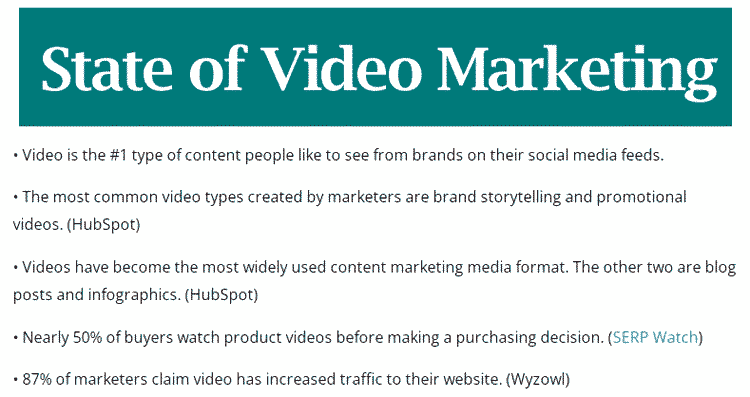
Despite the widespread use of video, many marketers believe that uploading a few videos to YouTube will do their job. Wishful thinking, but irrational!
Producing and distributing videos requires additional effort. If you want to see a positive return on your investment, your campaign must be timely, relevant, memorable, and, most importantly, optimized.
Here are three steps to optimize your videos:
1) People used to believe that videos could only be utilized for brand exposure until the idea of a video marketing platform was born.
In contrast, well-planned and well-executed video content may help guide your prospects through the sales process and increase conversion rates.
To do this, connect the idea of your video with your objectives from the beginning of the production process.
2) Even though marketers understand the significance of a call to action (CTA), it’s hard to find them in a lot of the video content available today. Don’t forget to add the precise calls to action before releasing your next video.
3) The email gate and lead-capture form are additional features that have made the jump from textual content to video content. Including an email gate in your video is critical once it’s ready to go live on social media.
This gives you an easy way to determine whether prospects are interested enough to provide you with their personal information.
SEO Predictions #6. Google’s LaMDA: Optimize for Voice Search
Rather than seeing search requests as a collection of poorly constructed dialogues, Google has been working on a new language model dubbed LaMDA. LaMDA stands for Language Model for Dialogue Applications.

With LaMDA, you don’t have to have any previous training to have a regular conversation on just about any subject matter.
The application will play the role of a person or object during interaction with users.
It’s doubtful how many people will actually want to interact with their devices, but there are plenty of circumstances in which it makes perfect sense.
Children and the elderly, for example, who do not know or care about the codified language we use to communicate with AI helpers, will be able to utilize this technology more intuitively.
And if conversational intelligence is integrated into a vehicle or appliance, personal identification will be critical.
For example, you might not want to ask: “Google, tell me how much gas is left in my tank.” But you can ask your “Beast” or “Crusher” the same question, and the vehicle will speak about itself.
Now you can have that lengthy, philosophical discussion you’ve always wanted to have with a random object.
The conversational dialogue will enable users to find information in ways that are currently unavailable.
This will also change our search behavior. And if it does, businesses will have to adapt to these technologies and make sure that their content or products are still discoverable.
So gear up for more conversational search with these next-gen chatbots.
SEO Predictions #7. Master Search Intent
Search intent or user intent is the “primary purpose” that a searcher has while searching.
Depending on his or her intent, a person types a certain query into the search engine. The search term is called “keyword phrase”. This could be informational, commercial, navigational, or transactional.
For example, the search purpose behind the query “how do you turn on the iPhone 13” is different from a search term like “best iPhones for gaming”.
Whereas in the first case, the user already has an iPhone, in the second case, the user is planning to buy an iPhone with gaming features.
Likewise, the intent behind the search phrase “how to design a front patio” is different from the search query “best patio furniture”.
Here are the search results (you can see the difference).
Results for the search query “how to design a front patio”:
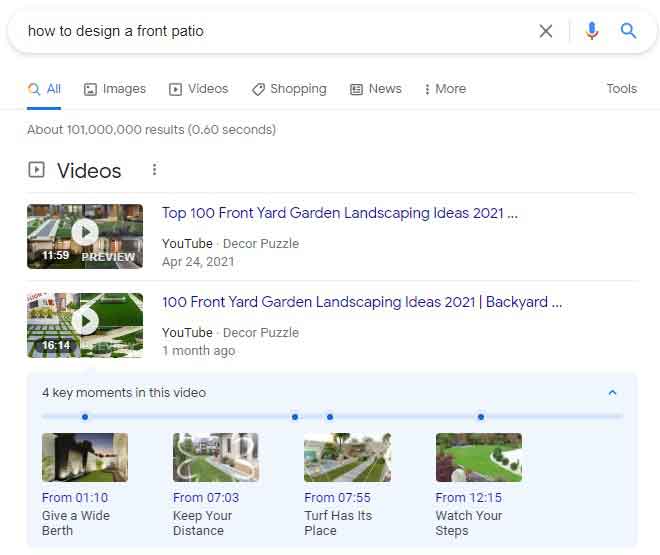
Results for the search query “best patio furniture”:
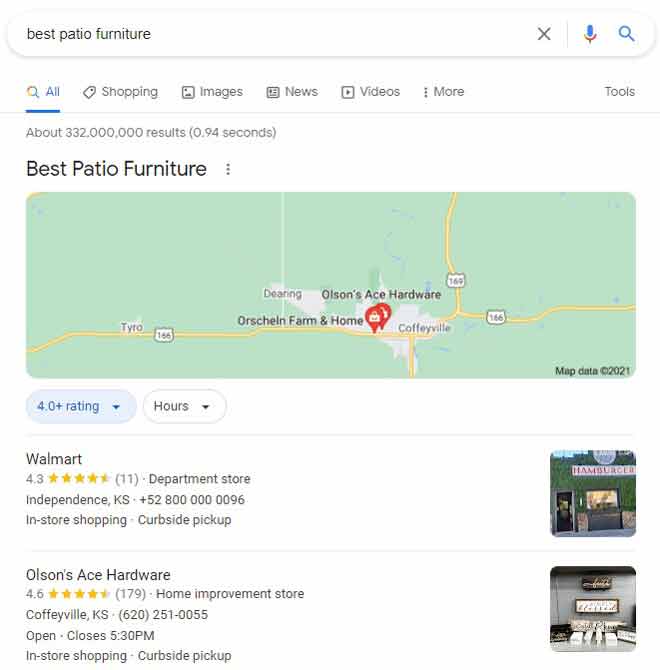
Therefore, you will want to create content keeping user intent in mind for different stages of the buying journey.
Here, keyword research plays a key role. You have to optimize your content around those specific keywords.
SEO Predictions #8. Publish Quality Content (Long-form)
Studies suggest that Google loves long-form content. In 2023, image-heavy in-depth guides will rank high on Google.
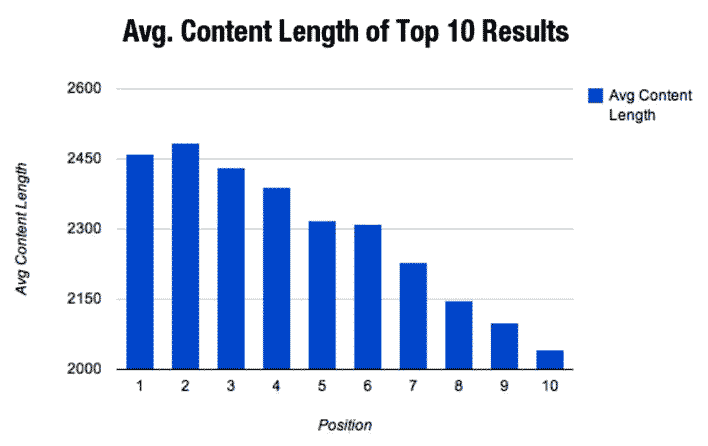
Long-form content like in-depth how-to guides, actionable steps, original research data, listicles, etc. works best. Users like these guides. They share and link to such content.
So, we need to focus on content quality.
Provide actionable guides that are easy to follow. Include a lot of visuals – images, diagrams, graphs, etc. into your content.
Also, make your content easy to digest. Use shorter sentences and paragraphs. Write in active voice. Split your content with headings, subheadings, images, bullets, and numbers.
SEO Predictions #9. Declining CTR
If you’ve noticed a drop in your organic click-through rate (CTR), you’re not alone. The fact is, the trend is being observed across the web.
A study by SparkToro and Jumpshot shows that click-through rates (CTR) are declining.
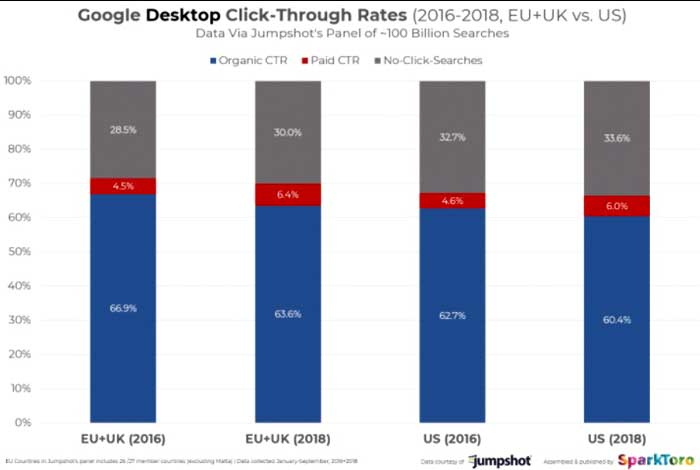
But the question is, why is CTR declining for search traffic and what does it mean for SEO?
There are several factors behind this decline.
If you look at the Google search page, you’ll see that it has paid ads, local sections, Q&A sections, images, videos, and actual site rankings. However, the main culprit is Google’s Featured Snippets.
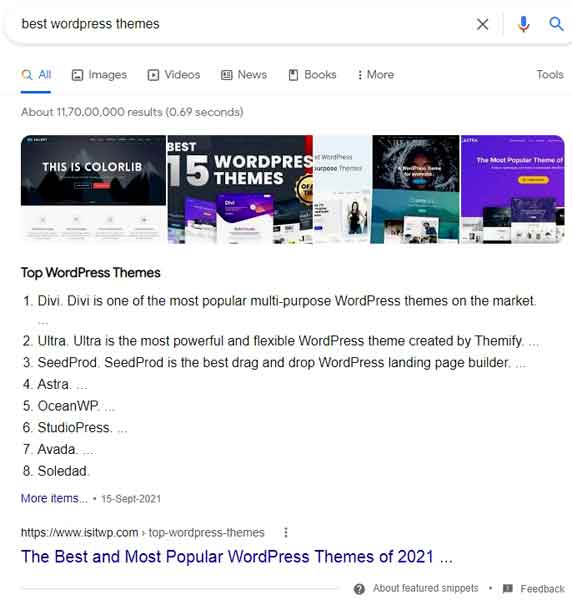
This means you have to compete with all of them for limited real estate.
Even the #1 site isn’t really on the top. Depending on the number of ads and featured snippets, its actual position could be anywhere between 3rd and 7th.
So it is only natural that your organic CTR is dropping. It’s up to Google what it wants to show and where.
Therefore, businesses need to tweak their SEO and marketing strategies to accommodate this reality.
What can you do?
• Optimize your content for featured snippets.
• Submit your business to GMB (Google My Business) and other location data platforms such as Foursquare, Yelp, etc.
• Double and triple down on rich content. These include videos, audio podcasts, interactive diagrams, infographics, and other high-quality visuals.
If you take these small but important steps, you can maintain and increase your online visibility while minimizing the impact of declining CTR.
SEO Predictions #10. Google E-A-T Update
Google believes, and for good, that your audience wants to know that you are an expert in your subjects.
For example, who would want to seek medical advice (or any advice for that matter) from an unqualified or dishonest person?
No one.
Enter Google E-A-T.

Image: Google.
E-A-T stands for expertise, authority, and trustworthiness. All of these factors play a role in your site’s rankings.
E for Expertise:
Are you an expert in your niche/topic? Are you qualified (education, experience, etc.) to provide certain advice to people?
Google is looking for content (and sites) that offer the best solution to its users. Is your user gets what he or she is looking for? Are you providing the exact solution to their specific problems?
You have to have the necessary education, experience, and credentials before you advise others.
This is more crucial for businesses in Y-M-Y-L (Your Money or Your Life) topics such as health, finance, etc.
A for Authority:
It is about public perception. It’s about your online reputation. It’s about what other people say about your brand.
Suppose you are an expert in your niche. But how will people (and Google) believe in that?
Besides providing correct and relevant answers to your users, you have to show that you are a reputable name in your field.
How many backlinks (and of what quality) do your website have. Are you registered on business review sites like Consumer Affairs, Better Business Bureau, etc.? What kind of reviews and comments do you get on social media sites and the platforms like Yelp, Foursquare, etc.?
All these determine your brand’s authority online.
Don’t fret. It’s not that hard to boost your site’s authority.
Steps you can take for this:
• Provide better services to your customers and get better ratings, reviews, and feedback in return.
• Get high-value backlinks from other authoritative sites in your industry.
• Join relevant communities.
• Participate in industry-specific forums.
T for Trustworthiness:
Are you reliable? Is your website safe? Will the user data be protected?
Online safety is a big concern these days. Therefore, Google too wants to ensure that it only sends people to sites that are safe and reliable. It doesn’t want to direct people to some scam site where they’ll get ripped off.
While E-A-T is important for every website, it’s a must for sites in the Your-Money-Your-Life (YMYL) industry such as health and finance.
You can boost your site’s trustworthiness by these simple steps:
• Migrate your site to HTTPS.
• Provide accurate contact details – address, phone numbers, email, etc.
• Whenever you create a new piece of content, be sure to provide relevant references to substantiate your claims.
• Connect with your customers and provide great after-sales service. In return, they will give you positive reviews and ratings.
SEO Predictions #11. Your Money or Your Life (YMYL)
Similar to EAT, YMYL is another search update by Google. The difference is, while EAT is for all the sites, YMYL particularly targets websites in the health, medicine, money, and finance sectors.

The logic is, such content directly impacts ours well beings, happiness, safety, or financial strength.
For instance, there is a blog that writes about drugs. Any false/inaccurate/deceptive information provided on it can cause serious harm to the health of the reader.
Therefore Google takes such content very seriously. If your site is focused on any of these topics then you will have to go through rigorous Google scrutiny.
That’s why a few years ago thousands of “male p****” sites disappeared from Google overnight.
So, if your business falls under the YMYL category, make sure your site is trustworthy (apply EAT guidelines here). Whatever you suggest on your content should be reliable, factual, and written by the expert only.
SEO Predictions #12. Google’s AI Algorithm: RankBrain
RankBrain uses a machine learning (AI) algorithm that helps Google understand search queries, process them, and sort search results. In short, it determines the most relevant results to search engine queries.
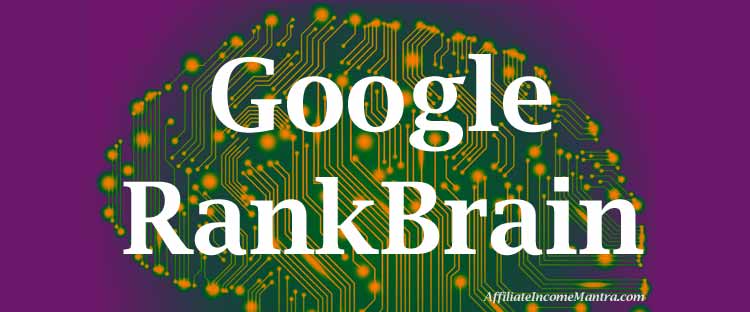
RankBrain does its work in the background. A search query goes through an interpretation model to determine the searcher’s true intent, which helps deliver more relevant results.
There are THREE main concepts of the RankBrain environment that modern SEOs need to understand.
First, Google applies different ranking singles to different queries.
Previously, it was ideal for a webpage to have all the traditional signals such as link diversity, content depth, keyword matching, etc.
But now, RankBrain is also matching signals to the intent of the query. Therefore, marketers (particularly the SEOs) need to determine what serves their audience best.
For example, if a searcher enters “link building steps” into Google, it means they’re looking for an actionable guide to link-building — a step-by-step guide that is easy to follow for them.
RankBrain understands this. Any superficial keyword-stuffed article will not work. You need to go deeper.
Second, signals apply to a site’s reputation.
For a better ranking on Google, a website should have a good reputation online. Signals that determine reputation include content depth & freshness, user engagement, diversity of earned links, and reviews & recommendations.
Therefore, you need to build your brand’s reputation as a resource that can win trust by both search engines and human users for delivering a unique experience.
Third, RankBrain understands keyword variations.
One piece of content around a single keyword doesn’t work anymore.
For example, RankBrain understands that “Link Building Steps”, “Backlink Guide”, “How to Build Links”, “Link Building Strategy”, “Link Building Tips” etc. are all variants of the same search query.
It will combine all the “search phrases” and determine the most useful content to rank for.
Hence, you do not need to create a separate post for each keyword. Instead, create a comprehensive resource covering all of these keywords in one article.
SEO Predictions #13. Speed Up Your Website
When we are talking about the SEO predictions for this year, page load speed matters a lot.
Studies prove that 53% of users will leave your site if it takes longer than three seconds to load.
Once gone, you’ve lost them forever.
Moreover, after the Google speed update, page speed is officially a ranking factor, especially in mobile search.
Page speed is one of the key components of Core Web Vitals. Page speed determines the quality of the user experience.
How to speed up your site?
First, use Google PageSpeed Insights to check how well your website performs.
Put your site’s URL and it’ll show metrics for each of the Core Web Vitals like this:

Check them out for both mobile and desktop.
Google will also give you suggestions to improve your website’s performance.
This suggests that you should make page speed an integral part of your SEO strategy. You have to tweak your websites from time to time.
Tips to speed up your website:
1) Compress your files. Compression applications will reduce the size of your HTML, CSS, and JavaScript files.
2) Minify your code. Also minify your CSS, JavaScript, and HTML. By optimizing your code you can increase your page speed dramatically.
There is a lot of unused code. Remove unused code, unnecessary formatting, comments, and spaces, etc. By “minifying” and combining your files, you can further improve your site’s speed.
3) Enable browser caching. Browser caching helps to store some of your site’s information locally in the user’s browser.
These include style sheets, logos, images, backgrounds, HTML, CSS, and JavaScript files, etc.
When a user revisits your site, the browser does not need to reload the entire page. Instead, it uses the same files it downloaded earlier (cache). It’ll greatly improve your page load times.
4) Optimize your images. Images and other types of visuals are quite large files. If your pages are image-heavy, it will significantly slow down your page load times.
While images play a vital role in increasing your website’s conversion rate and engagement, they need to be optimized for SEO and page load times.
How to reduce image size?
• Crop the images to the correct size. They should not be too big.
• Use proper file formats. PNG and JPEG are the best image formats. Also, compress them for the web.
5) Use a CDN. A Content Delivery Network or Content Distribution Network (CDN) provides a rapid delivery of online content.
CDN facilitates the quick transfer of files by minimizing the distance between your visitors and your site’s servers.
A CDN stores the cached version of your site in multiple geographic locations and delivers the content from the nearest servers, thereby reducing load times for your visitors.
6) Use external hosting platforms. If your site contains a lot of large files, such as videos, these can slow down your site.
To get rid of this problem, you’ll want to host your heavy files on an external hosting platform such as YouTube, Vimeo, Wistia, etc. This will help you improve your page load time.
7) Improve server response time. Server Response Time (SRT) is the amount of time between a user requesting a page and the server’s response to that request.
If your site brings in a lot of traffic, it will affect your server response times. Server response time also depends on the software and technologies used by the host server.
The server response time (SRT) is measured in “Time To First Byte” (TTFB).
The optimum TTFB is less than 100ms. Keep the Server Response Time (TTFB) under 200ms at all costs.
You can take the following steps to improve your site’s server response time:
• Fix your DNS query speed, if needed, switch to a faster DNS provider
• Optimize your database
• Use a lightweight WordPress theme
• Keep your plugins, themes, WordPress, and PHP updated
• Optimize your web servers
• Upgrade your hard disk memory
8) Choose the right hosting that suits your needs. Finally, if nothing works, switch to a better hosting service that meets your specific needs.
SEO Predictions #14. Google MUM Algorithm
Google MUM algorithm stands for Multitask Unified Model.
MUM is an AI-based technology that enables Google to find, understand, and answer complex search queries such as images.
Yes, it’s not just text, Google MUM can also search with images, across languages.

Image: Google.
The MUM algorithm is likely to revolutionize the world of web search. Users are currently searching for answers. But MUM will help users explore more complex subjects with intuitive visuals.
It is assumed that MUM will understand natural language. And if it does, it will be for good.
This means that marketers have to create content for people, not search engine algorithms.
SEO Predictions #15. Google Shopping Graph
According to Google, the Shopping Graph is a “dynamic, AI-enhanced model that understands the ever-changing set of products and related information such as SKU & inventory data, sellers, brands, prices, reviews & ratings, videos, and more.”

Google Shopping Graph is built on the knowledge graph and works in real-time.
To summarize, the Google Shopping Graph is a real-time data set that connects buyers to sellers’ products over the Internet.
Google Shopping Graph vs. Google Shopping: Google Shopping Graph is different from Google Shopping. It differs in that Google Shopping has always been more of an advertising platform.
With Shopping Graph acting as the middleman between shoppers and merchants, Google is set to become a new contender in the e-commerce space that will compete directly with marketplaces like Amazon.
SEO Predictions #16. Use Structured Data

Using structured data means formatting your content in a way that helps Google understand what the page is about.
With structured data, you tell search spiders how to display the information provided on the page.
Structured data is a standardized markup for describing pages and classifying the page content.
For this, you have to use the schema markup. Schema markup is the code (semantic vocabulary of tags) that you add to your HTML.
All major search engines including Google, Bing, and Yandex use Schema.org markup.
Structured data is normally stored in well-defined schemas like databases. There are many advantages of using structured data, such as:
• It is indexed based on the text string and its attributes, which makes it hassle-free to render.
• The data is so well organized that the definitions, format, meaning of the data can be clearly known.
• The data elements are addressable enough to be able to be analyzed and processed. It is completely easy to access and query, so other programs (such as search engines) can easily access the data.
How does structured data help SEO?
Structured data is very important for SEO. Because using structured data is like telling Google what your page is about and how to present it. This will help you a lot in your search rankings.
How?
Structured data will make it easier for Google to understand what your page is going to show in search results.
Additionally, it will change the way your search results appear on the SERP. This will show your customer more specific data-driven information such as lists, tables, rich snippets, etc., which will increase click-through rates.
Needless to say, better CTR will eventually lead to even higher rankings, more traffic, and more revenue.
SEO Predictions #17. Work for Audio SEO
The future of search is voice.
According to Statista, the value of online purchases using voice-activated devices is expected to reach approximately $40 billion by the end of this year.

Google says, globally 27% of online users are using voice search on mobile.

According to Juniper Research, voice search-based commerce will exceed $80 billion per year by 2023.
These figures show how fast voice search is growing.
What does this mean for SEOs and marketers?
To keep up with the flow, you also need to include audio content as part of your overall SEO content marketing strategy.
Find FAQs specific to your business. Begin by answering questions that your audience asks or is most likely to ask. Try to address those questions in your audio material. Keyword research will play an important role in this. Look for long-tail keywords.
How to optimize your site for voice search?
Here are the steps you can take to optimize your website for voice search:
1. Use long-tail keywords.
2. Convert common queries into questions and then answer them in your audio content.
3. Make your site mobile responsive (most of the voice searchers use smart devices).
4. Use more conversational, easy-to-understand language in your content. Avoid difficult jargon.
5. Optimize your content for featured snippets.
If you produce a lot of audio and podcasts:
1. Produce high-quality audio content.
2. Amplify your podcasts. Publish them to all major streaming platforms to maximize your reach. Share them on social media.
3. Pick one topic (primary keyword) for each piece of content or episode and optimize your titles and descriptions for that term.
If you create YouTube videos:
1. Use clear and concise titles and descriptions.
2. Include descriptive jump links within your description.
3. Include a full transcription of your video at the end of the description.
4. Encourage user engagement – ask for likes, shares, and comments.
5. Embed your audio and videos on your website.
SEO Predictions #18. Ethical Link Building
To be honest, this one is not a prediction. Nor am I including it here because backlinks are one of the most important SEO ranking factors. Every marketer knows this.
Instead, I am including it here because despite being the most important SEO ranking factor, the majority of marketers are doing it the wrong way.
Link-building is one of the most controversial topics in online marketing. It is also the toughest job for marketers.
While backlinks are one of the most powerful ranking factors, they also come with a lot of risks if done incorrectly.
So, site owners and marketers need to be very careful while building links. Building backlinks indiscriminately can destroy your business overnight.
Below are some ethical link-building strategies (safe and effective) for this year and beyond:
1. Be a source for journalists
2. Earn backlinks through brand mention reclamation
3. Guest blogging to build connections
4. Link earning with content marketing – Create Linkable Assets (research reports, stats, journalistic content (news and trending topics), intuitive visuals and Infographics, useful tools, details how-to guides, listicles, etc.)
5. Promote your content on social media and Q&A sites such as Quora, Medium, LinkedIn, Reddit, etc.
6. Join niche communities
7. Review other’s products and services
8. Internal link building
Not that I am saying anything new. Google has been asking webmasters for years to follow ethical practices when promoting their content online.
However, with rapid changes in technologies and search engines like Google using sophisticated algorithms, traditional tricks of promotion will not produce the desired results.
Therefore, it is important for marketers to think out of the box and do their marketing activities keeping the real humans in mind instead of search bots.
That’s all on SEO Predictions and Trends for now.
To your blogging success!
Until next time.
JD Bhatala is a Content Marketing Strategist with over 15 years of experience. He is the co-founder of Web Content Edge where he helps online businesses gain visibility and increase traffic, leads, and sales. Catch him online at Twitter or LinkedIn.

